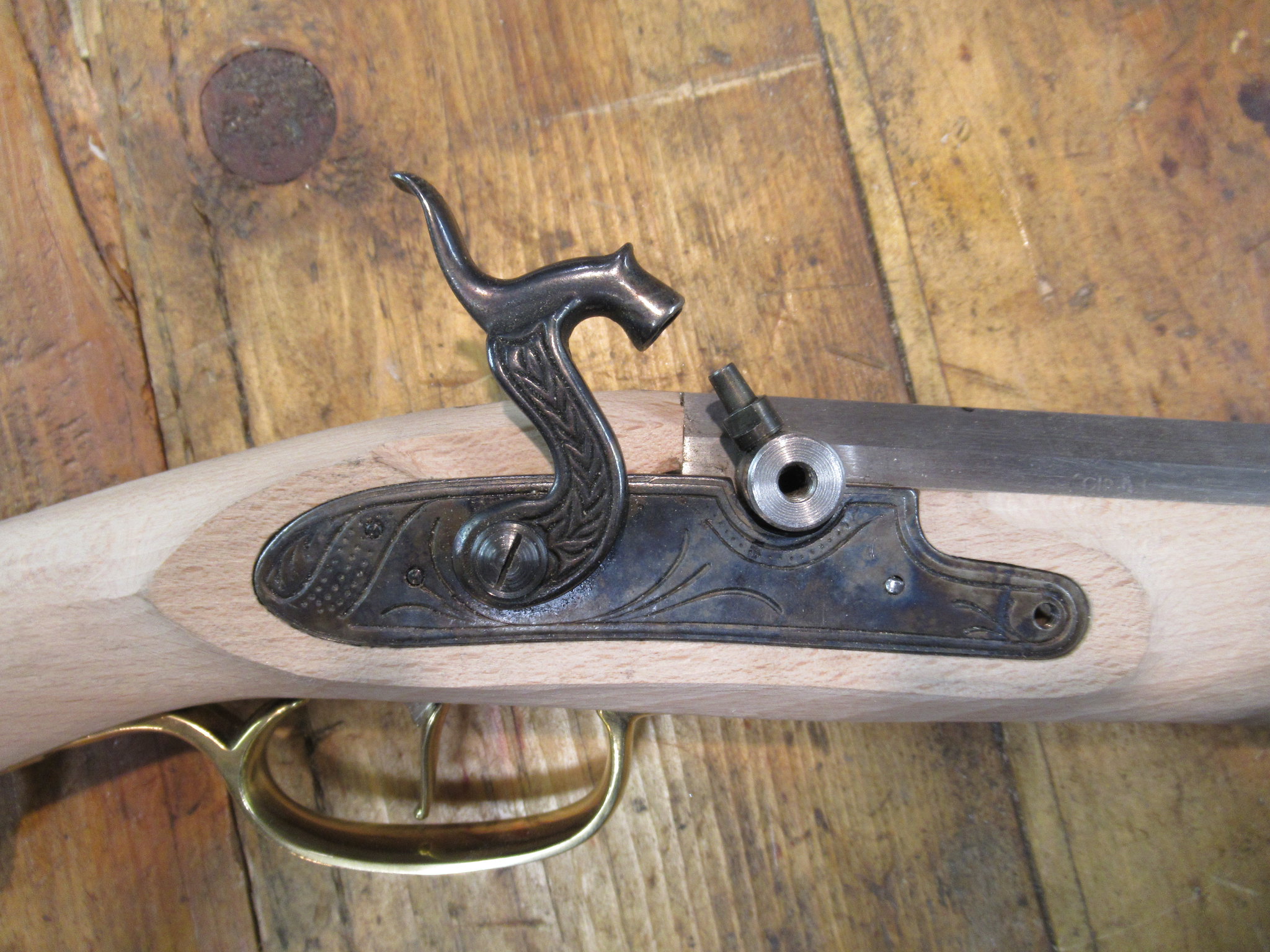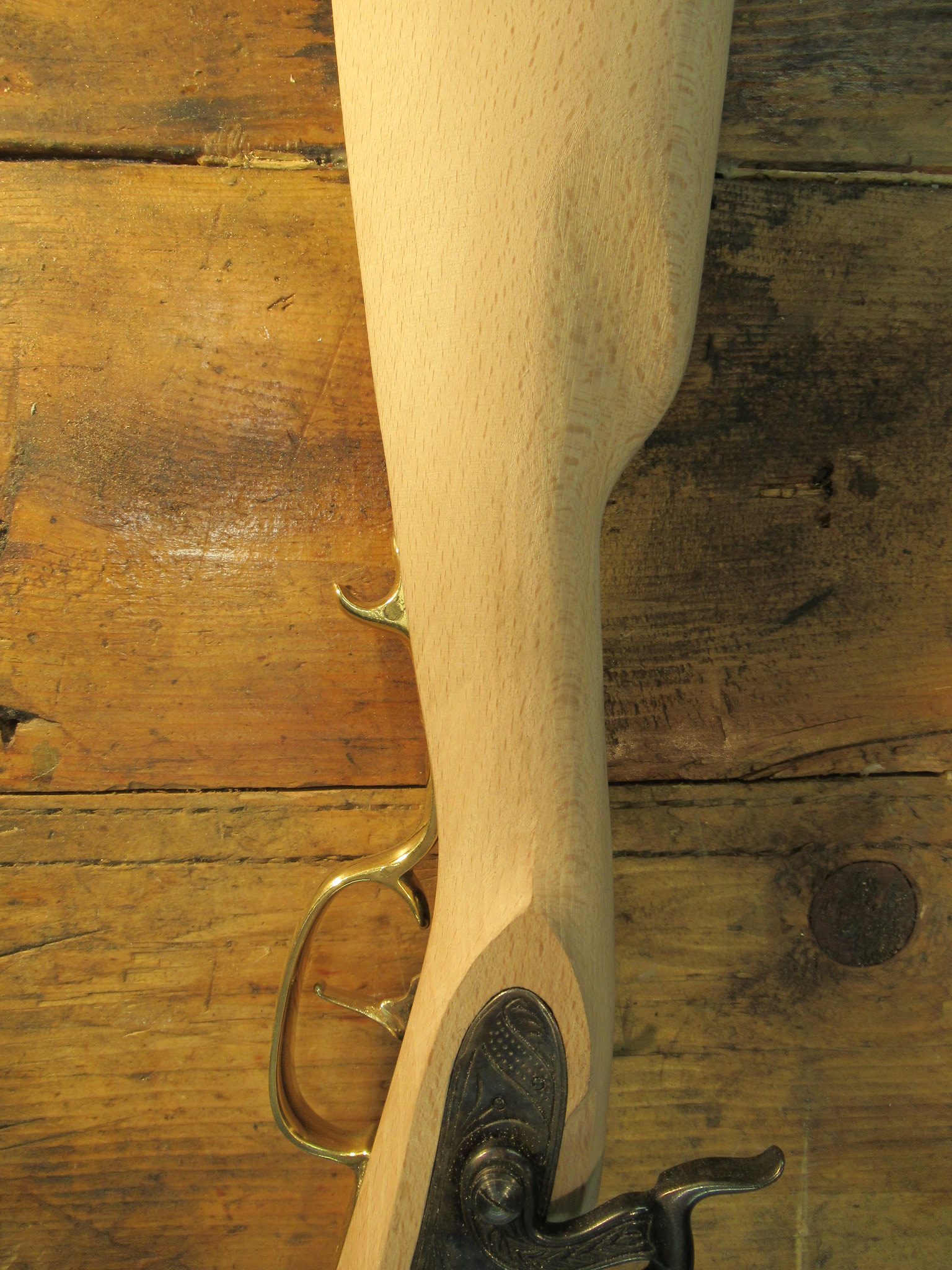-
Friends, our 2nd Amendment rights are always under attack and the NRA has been a constant for decades in helping fight that fight.
We have partnered with the NRA to offer you a discount on membership and Muzzleloading Forum gets a small percentage too of each membership, so you are supporting both the NRA and us.
Use this link to sign up please; https://membership.nra.org/recruiters/join/XR045103
You are using an out of date browser. It may not display this or other websites correctly.
You should upgrade or use an alternative browser.
You should upgrade or use an alternative browser.
First Muzzleloading Kit Build Thread
- Thread starter granth
- Start date

Help Support Muzzleloading Forum:
This site may earn a commission from merchant affiliate
links, including eBay, Amazon, and others.
If I might offer some advice, don't get too excited and rush it. One area often not done correctly are the lock panels and sideplate panels. Sand with a flat block and keep the panels flat and the edges of the panel sharp, don't round off the edges. Take your time and don't be afraid to ask questions, enjoy!
But do really thin out the fore end and taper the fore end into the barrel.
Most first-time kit builders will leave the lock panels too wide. The panel at the bottom of the lock should be about 1/8" to 3/16" wide. You can go more at the front and rear of the lock.
Do take your time. Do polish up the internal surfaces of your lock and triggers, especially the points that rub.
Most first-time kit builders will leave the lock panels too wide. The panel at the bottom of the lock should be about 1/8" to 3/16" wide. You can go more at the front and rear of the lock.
Do take your time. Do polish up the internal surfaces of your lock and triggers, especially the points that rub.
DAY 1:
Today I unboxed, and staeted dry fitting the parts. The lock fits snug and tight, as well as the tang, trigger assembly and trigger guard. I estimate I am around halfway done with the dry fitting process. The building so far has gone very smoothly, and I have had no major issues. So far I have spent 3 hours on the build.
Today I unboxed, and staeted dry fitting the parts. The lock fits snug and tight, as well as the tang, trigger assembly and trigger guard. I estimate I am around halfway done with the dry fitting process. The building so far has gone very smoothly, and I have had no major issues. So far I have spent 3 hours on the build.
- Joined
- May 5, 2021
- Messages
- 225
- Reaction score
- 531
My first and only build was a Traditions Kentucky rifle kit. It is by the standards most forum members have pretty rough, as I didn't really take as much time as I could have on it. But it shoots great and I'm happy with it. That's all that really matters.
Very true!My first and only build was a Traditions Kentucky rifle kit. It is by the standards most forum members have pretty rough, as I didn't really take as much time as I could have on it. But it shoots great and I'm happy with it. That's all that really matters.
hanshi
Cannon
Photos of the finished rifle are mandatory...Capisce?
I will most definitely post pictures of the final product! I've been working on it pretty vigilantly, and so far it has gone great! (excuse the mess lol)Photos of the finished rifle are mandatory...Capisce?

Phil Coffins
69 Cal.
I can see you’re having fun with your build and are doing well with it. I’d like to encourage you to trim the lock panels. It will make a much better looking rifle with a minimum of effort. Here’s an example for your consideration.
 IMG_0387 by Oliver Sudden, on Flickr
IMG_0387 by Oliver Sudden, on Flickr
 IMG_0387 by Oliver Sudden, on Flickr
IMG_0387 by Oliver Sudden, on FlickrThanks for the image! This will really help me out when I'm profiling that lock panel.I can see you’re having fun with your build and are doing well with it. I’d like to encourage you to trim the lock panels. It will make a much better looking rifle with a minimum of effort. Here’s an example for your consideration.
IMG_0387 by Oliver Sudden, on Flickr
- Joined
- Mar 13, 2020
- Messages
- 7,480
- Reaction score
- 20,986
- Location
- On the Border in Idaho looking at BC
mess???? what mess! one needs a front end loader to approach my bench and vise!
looking great!
i have never built a kit as such, but have used a couple pre carved stock. the hardest thing for me was taking wood away as Phil recommends. But done it makes the rifle so much more svelte. less clunky. my second one Phil advised slimming the panels after i was done with the finish. i went ahead and did it and refinished. really glad i did. i slimmed the wrist too at the same time. have come to the conclusion that they are never really done!
looking great!
i have never built a kit as such, but have used a couple pre carved stock. the hardest thing for me was taking wood away as Phil recommends. But done it makes the rifle so much more svelte. less clunky. my second one Phil advised slimming the panels after i was done with the finish. i went ahead and did it and refinished. really glad i did. i slimmed the wrist too at the same time. have come to the conclusion that they are never really done!
Last edited:
Phil Coffins
69 Cal.
Another thing you may want to do is thin the comb so the wrist can be rounded a bit to flow into the butt stock. It will help refine the lines and make your rifle stand out in the crowd.
 IMG_0388 by Oliver Sudden, on Flickr
IMG_0388 by Oliver Sudden, on Flickr
 IMG_0388 by Oliver Sudden, on Flickr
IMG_0388 by Oliver Sudden, on Flickrhanshi
Cannon
Slimming the lock panels and working the wrist to make it flow is great advice and looks very unlike most finished otc rifles.
Granth when you are done please post pictures. very nice looking.Hello y’all, I just received a Traditions .50 Caliber Flintlock for my recent birthday. I am super excited to build it, and I will update this thread with my build progress. Wish me luck!
Will do!Granth when you are done please post pictures. very nice looking.
rafterob
62 Cal.
Yeah, you don't want to dry fire a flintlock without a flint or a wooden "false" flint in the jaws. As you found out, the screw will contact the frizzen, bending it (or in your case) breaking it.
A good rule of thumb, is to take off as much wood as you think you should, then take off more. Most leave way too much wood on a stock, especially those building a long rifle.
Another thing many fail at, is having a lock mortise too tight. I like to be able to remove the lock bolts, and be able to tip a gun on it's side, and have the lock fall out of the stock, or nearly so. If too tight, and they get wet, that can cause a split. English guns were all built like this. Also, when tightening lock bolts, they should just be snug, not torqued down. This can cause the lock plate to bend, causing function problems.
Another thing many fail at, is having a lock mortise too tight. I like to be able to remove the lock bolts, and be able to tip a gun on it's side, and have the lock fall out of the stock, or nearly so. If too tight, and they get wet, that can cause a split. English guns were all built like this. Also, when tightening lock bolts, they should just be snug, not torqued down. This can cause the lock plate to bend, causing function problems.
Last edited:
Lol, live and learn!Yeah, you don't want to dry fire a flintlock without a flint or a wooden "false" flint in the jaws. As you found out, the screw will contact the frizzen, bending it (or in your case) breaking it.
Similar threads
- Replies
- 2
- Views
- 165
- Replies
- 27
- Views
- 685





